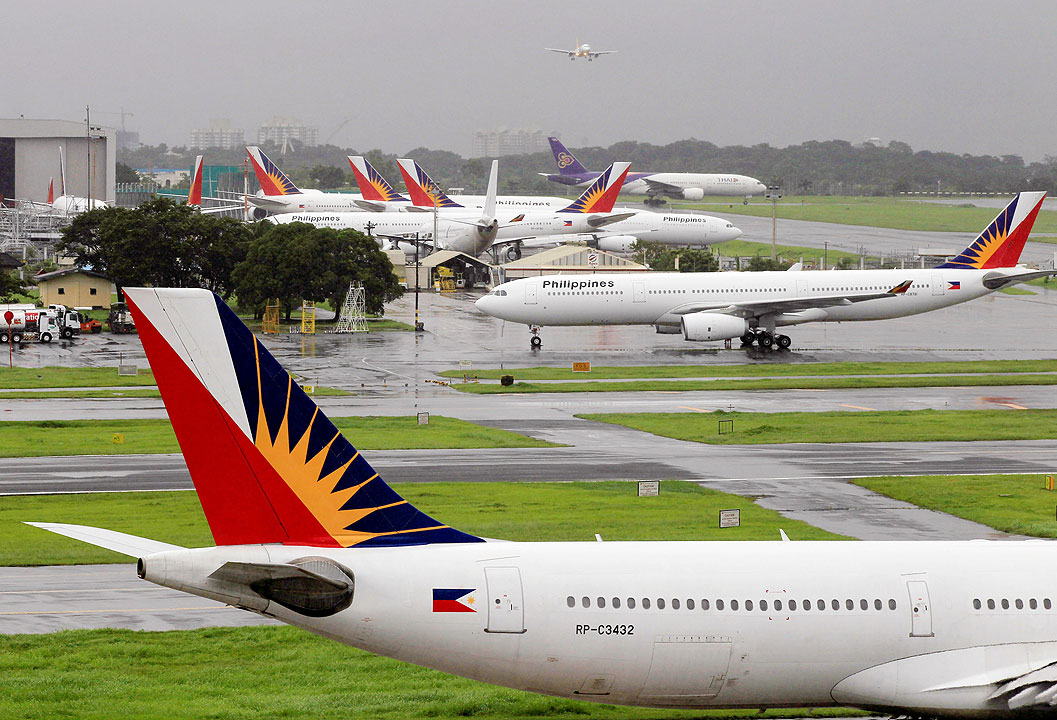Banks say loss buffer can cover PAL’s woes

By Luz Wendy T. Noble, Reporter
CREDITOR banks of Philippine Airlines, Inc. (PAL) are confident they are well-placed to absorb the impact of the flagship carrier’s bankruptcy filing, citing their ample loan loss provisions.
BDO Unibank, Inc. said the bank, together with the majority of the creditors, are supportive of PAL’s restructuring plan.
“BDO’s exposure is adequately covered with its security, and the provisions set aside to cover for potential losses. With the restructuring in place, the bank does not see the need to set aside additional provisions on its exposure. BDO’s PAL exposure is not significant, relative to the size of our loan book which stands at P2.2 trillion, and our capital base, which stands at P413 billion,” it said in an e-mail to BusinessWorld.
As of end-June, BDO’s credit provisions amounted to P6.8 billion, down by 69.6% against the P22.4 billion posted in the same period of 2020.
The lender has “secured claims” on PAL worth $80.42 million, making it among the top five creditors with largest “secured claims” cumulatively worth $866.09 million, based on a document posted by Kurtzman Carson Consultants LLC, PAL’s claims agent.
Philippine National Bank has the biggest secured claims among local lenders at $156.51 million. The Tan-led lender declined to comment regarding the impact of its sister company’s restructuring on the bank’s performance.
“Due to privacy issues, the bank is unable to provide details regarding its customers and their transactions,” it said in an e-mail.
PNB’s gross nonperforming loan (NPL) ratio stood at 11.47% as of end-June from 4.77% a year earlier. Fitch Ratings has earlier said the bank’s NPL ratio as of end-March was “significantly higher than the system average.” Its loan loss provision stood at P19 billion for the first semester, equivalent to a 60% NPL coverage ratio.
Meanwhile, China Banking Corp. has the third biggest exposure on secured claims worth $54.83 million, which it says it can “very well absorb.”
“China Bank’s exposure to PAL is a small percentage of our total loan portfolio of P596 billion as of end-June; in addition, we have been continuously adding to our loan loss reserves and maintaining our strong liquidity and capital position, so I would say, we can very well absorb the impact of this unfortunate circumstance,” China Bank Chief Financial Officer Patrick D. Cheng said in an e-mail.
“We had expected and prepared for the economic consequences of this pandemic, and we will continue to help and support our business and individual customers who are most impacted by the slowdown to stay afloat and recover,” Mr. Cheng added.
The lender’s provision for losses as of end-June increased 12.8% to P5.4 billion from a year earlier.
Other lenders such as Asia United Bank (AUB) and UnionBank of the Philippines, Inc. said they have already fully provided for their exposures to PAL in 2020.
AUB’s provisions for credit losses for the first half of the year stood at P896 million, lower by 41% against the P1.5 billion it set aside in the same period of 2020.
Meanwhile, UnionBank’s loan loss provisions declined 56% to P3.1 billion as of end-June.
“AUB is on track to meet its profitability target despite the recent announcement of PAL’s filing of relief under Chapter 11 of the US Bankruptcy Code,” lawyer Emma Theresa M. Cabochan, first vice-president, legal services head at AUB, said in an e-mail.
“This will have no impact on the bank’s risk taking activities moving forward as it is only 0.3% of our portfolio and is fully provided,” UnionBank said in an e-mail.
GOV’T AWAITS OUTCOME OF BANKRUPTCY FILING
Meanwhile, Finance Secretary Carlos G. Dominguez, III, formerly PAL’s chief executive officer and chairman, said he would wait for the results of the proceedings to gauge whether state-owned financial institutions can participate in financing the national carrier for its post-restructuring needs.
“We will have to wait for the results of the bankruptcy proceedings because I do not want LANDBANK (Land Bank of the Philippines) and DBP (Development Bank of the Philippines) to go in and finance a company that is filing for bankruptcy and we don’t know how it will turn out,” he said in a Senate hearing on Thursday.
The flag carrier, which is majority owned by billionaire Lucio C. Tan, last week filed for bankruptcy protection in the United States.
PAL Senior Vice-President for Strategy Dexter C. Lee earlier this week said he expects the airline to return to pre-pandemic level of operations after 2025 given the prolonged pandemic.
BDO believes PAL’s financial difficulty stemmed from the pandemic crisis, saying the carrier is able to generate “sufficient revenues during normal times.”
“The goal of the restructuring plan is to help the company get through this temporary period of uncharacteristic low revenues, with the expectation that operations will eventually go back to normal at a future time. PAL remains viable even if it’s operating only at a fraction of its pre-COVID-19 (coronavirus disease 2019) levels,” BDO said. — with Beatrice M. Laforga



